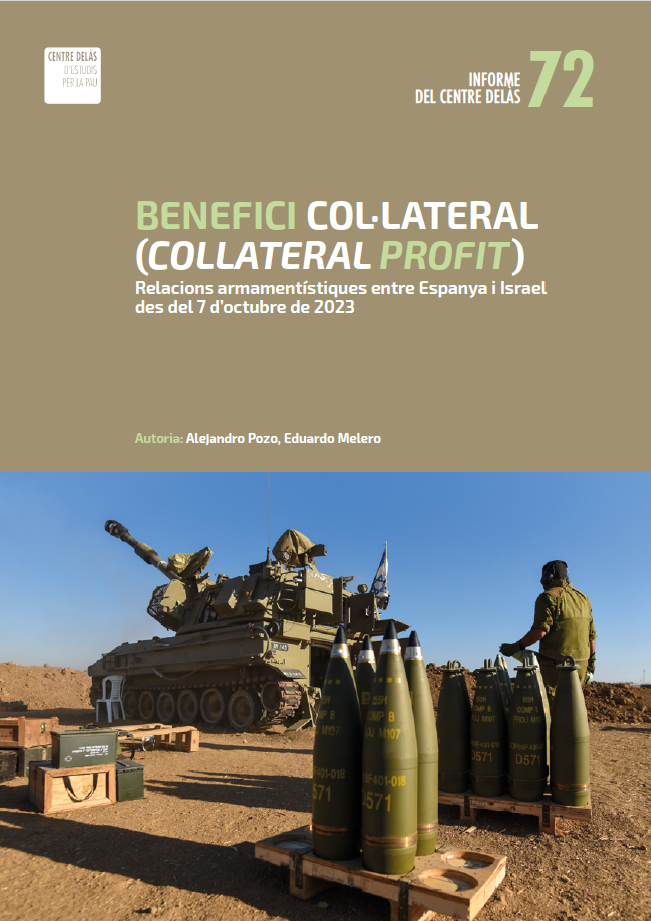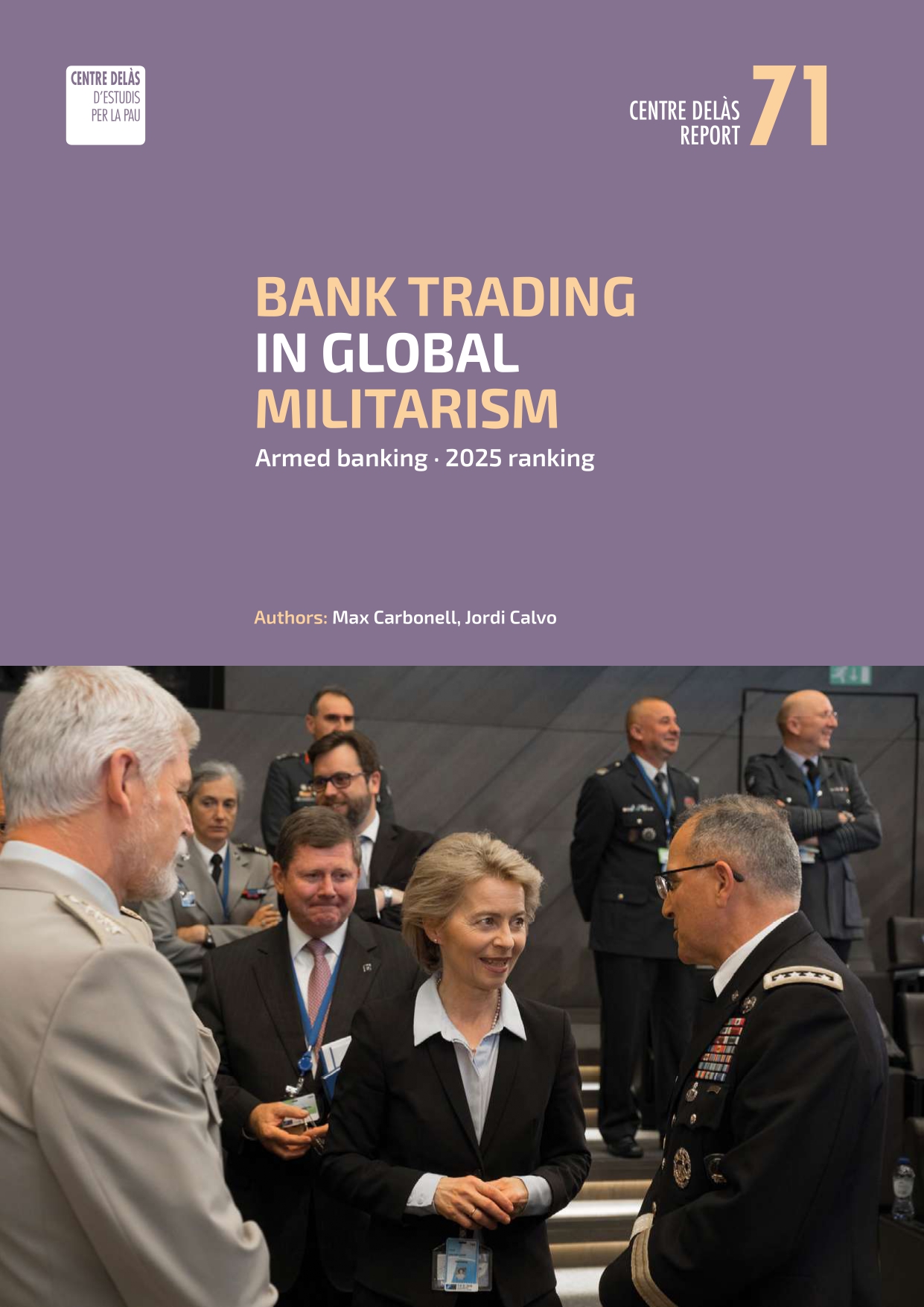The Crisis and the Inevitability of Cuts in Military Spending.
Article published in the GDAMS Newsletter
Arithmetic is an exact science, but each of us work out our budget based on our criteria and interests. That also happens with the budgets of military spending – different people may do the accounts very differently.
To take one example, the prestigious Stockholm International Peace Research Institute (SIPRI) uses a set of criteria to determine all of the aspects of military spending, which include veterans and dependents, contributions to international military organizations, paramilitary groups, Military R+D, civilians in the employ of the Ministry of Defense, etc. But at the moment of publishing figures, the SIPRI winds up accepting the figure that each country’s government declares, despite the criteria which indicates that actual military expenditure is much higher.
The best example that we have of this in the US. The approved budget for military spending in 2013 is $633 billion. Other sources raise the figure to $673 billion, and the War Resister’s League indicates that once we take into account the expenditures distributed among many other departments, we can expect the true cost to the taxpayers for the military to be around $839 billion. This is also applicable to the great powers in China and Russia, where military spending is also hidden among many ministries and departments.
Given this, lets take a look at current global military spending. Between 2005 and 2011, accounting for inflation, military spending increased in every part of the world with the exception of Europe, where the crisis which began in 2008 has led to cutbacks. But the crisis is systemic, and inherent capitalism – to the economic and political model which dominates the world. And this crisis has most affected the GDP in the countries of the developed world, particularly the US and in Europe.
If there is any expenditure which could be found to be excessive and inefficient from a macroeconomic viewpoint, it is military spending. This is evident with the arrival of the crisis, the governments of the EU and the US started to carry out cuts to public services, and the first Ministry to see cuts was the Ministry of Defense. Barack Obama’s reelection as US president in 2012 was accompanied by a promise to reduce defense spending over the next 10 years by $487 billion. In terms of the GDP, military spending in the US has shrunk from $690 billion in 2011, while the proposal in 2014 is to reduce it to $572 billion.
In Europe, with the arrival of the 2008 crisis, governments have been obliged to take on budget reductions in almost every country: the UK, France, Germany, Italy, and to a lesser extent Spain. The path has been to wipe out some large weapons programs or to reduce the number of active military personnel.
For example, the UK agreed to carry out cuts to military spending, 8% annually over the next four years with a total savings of £20 billion, which has obliged them to reduce the number of nuclear weapons, call home 20,000 soldiers based in Germany, put three aircraft carriers and the Harrier aircraft based on them into mothballs, dismantle Vanguard nuclear subs, and abandon the manufacture of the Joint Strike Fighter Program, and finally to renegotiate contracts with the defense industry.
France was obliged to revise its concrete objectives in its defense White Book in 2008. In 2009, they announced that they would reduce 54,000 active military personnel by 2015, and cancel the construction of a second aircraft carrier. They also decided to postpone the manufacture of the Mirage 2000D aircraft. And recently, in March of 2013, President François Hollande proposed the elimination of one third of the soldiers (100,000 soldiers) and to reduce the budget of the Ministry of Defense by 50% by 2020, from €30 billion to €15 billion.
Meanwhile the German government decided to professionalize the army, reducing the number of active military personnel from 252,000 to 185,000 soldiers. As well, Chancellor Angela Merkel announced that they would reduce military spending by €450 million, of which €250 million would be reduction of arms, such as the canceling of the commitment to acquire 37 new EF-2000. As for the A400M aircraft, the German government backed off on the initial estimate of 60 units, down to 40, as well as reducing the number of NH-90 and Tigre helicopters, and the Meads missile system.
As for Italy, it has reduced its order to EADS for EF-2000 planes by 25, and will only acquire 6 of the 10 frigates FREM they were initially expecting to buy.
Finally, in Spain, one of the European countries most affected by the crisis, where unemployment levels reach almost 25% (with more than 5 million jobless) the military spending starting in 2008 has shrunk by 20%. But despite these decreases, the number of active military personnel has not been reduced, nor have any large weapons contracts been canceled. No cuts have been made to the EF-2000 combat fighter program, or the A400M planes, or the NH-90 or Tigre helicopters, the Leopard Tanks, nor a variety of warships. The result is that the cuts that are made will all affect the operational maintenance of the weaponry and the armed forces, meaning that much of the Spanish army will be nonoperational.
* * *
According to SIPRI, military spending in 2012 was $1,740 billion, which was a slight increase, 0.3% compared to 2011, a figure which represents 2.5% of the global GDP. A figure, which may actually be far under that which is truly spent, if one considers that most states do not declare the entire amount of their military spending. This huge amount of money is used for the upkeep of 21 million soldiers (1.8 million in the EU alone) and to buy enormous amounts of arms ($400 billion each year). Military spending that feeds old conflicts and creates new ones. These figures, which show that albeit slowly, military spending continues to increase around the world. Though it is on the downswing in Europe and the US, it is growing in other areas, especially in the emerging powers of the BRICS: Brazil, Russia, India, China and South Africa, as well as in other countries which have ambitions to become a regional power, such as Turkey, or are in hostilities, such as Saudi Arabia and Iran, North Korea and South Korea, or Taiwan and China. Although it is also true that none of the BRICS is looking to face the US for world military dominance. In comparing the military cost of the BRICS it’s clear that is far less than that of the US (Table 1). Although it is certain that China, in the last ten years, has greatly increased military spending, nearly 8% annually. But even so, its a far cry from US military spending, which represents 42% of global military spending, despite having only 4.5% of world population and 20% of the GDP.
Table 1 – US and the BRIC

(1) Sipri yearbook 2012 en $ constants 2011
On the other hand, its worth mentioning that neither China nor the rest of the BRICS have tried, despite increases in military spending, to compete with the US in terms of the arms race, since the types of weapons they are choosing to develop are neither strategic, nuclear, or intercontinental missiles, which could threaten the US. Instead, they have decided to invest in conventional arms, and particularly to reinforce their fleets, with the construction of subs and warships. Which indicates that they are more interested in securing the waterways which bring them mineral and fuel resources, than in rivaling the US military.
Although its premature to announce a drastic reduction in military spending, what is certain is that the trend of military spending is on the downturn. On one hand, emerging powers are not looking for power via military supremacy nor are they trying to rival the US in military supremacy. On the other hand, owing to the crisis, which is hitting the US and Europe hardest, reductions in cost are inevitable, and without a doubt, the most difficult cost to justify is military spending. The rest of the article will deal with this point.
* * *
Supporters of armed defense put forward the argument that the principal argument for military spending is the enormous profits that the national economies receive from the production of arms through the channeling of R+D technology to civil goods. Or the economic well-being is owed in part to the enormous military expenditures, due to the tight relationship with the economic conglomerate which surrounds the military industry and the arms exports. To demonstrate this, they turn to the case of the US, claiming that almost a third of the country’s economic activity depends directly or indirectly on the military sector. This is only relatively true, because the the costs of the military were maintained under certain limits, which could be absorbed through public indebtedness, but starting in 2001, with Bush’s war on terrorism, and the invasions of Afghanistan and Iraq created a public debt of some $1.3 trillion, which according to the calculations of some economists, was as high as $3 trillion. The debt has grown to such heights that it risks destabilizing the US economy. This enormous cost, along with the sub-prime housing crisis, contributed to the collapse of the US financial system, which then affected the rest of its allies in Europe.
The promise of the positive impact of military spending on the economy, which has led over time to the enormous figures we see today, has been shown to be a mirage. In fact, a discerning economic critique shows that military spending actually slows down economic growth, because both arms programs and maintenance of a standing army require enormous amounts of resources and don’t make a contribution to the real economy. We mustn’t forget that the overwhelming part of the arms – more than 95% – are purchased by the state, and so there is no exchange within a market, which means it is a dead end for social value or the creation of wealth.
This vision sustains that the resources destined for civil production will create more growth, but we should question the three main ideas used to support this. As for the promise that technological advances will automatically be channeled to the civil sector, these technologies are often hijacked in the military arena until they are fully developed. Secondly, military spending generates public debt and inflation by keeping capital goods out of the productive civil sector. Finally, they slow world economic growth, because technology is converted into weaponry rather than human development for the betterment of the population, in developing countries which have few resources.
The 15 of April, declared as the Global Day Against Military Spending, is a day to raise our voices and show our disagreement with policies which allow this squandering of resources needed for human well-being, and which actually represent a threat to peace and world security.
(1) Sipri yearbook 2012 (in 2011 dollars adjusted for inflation).







